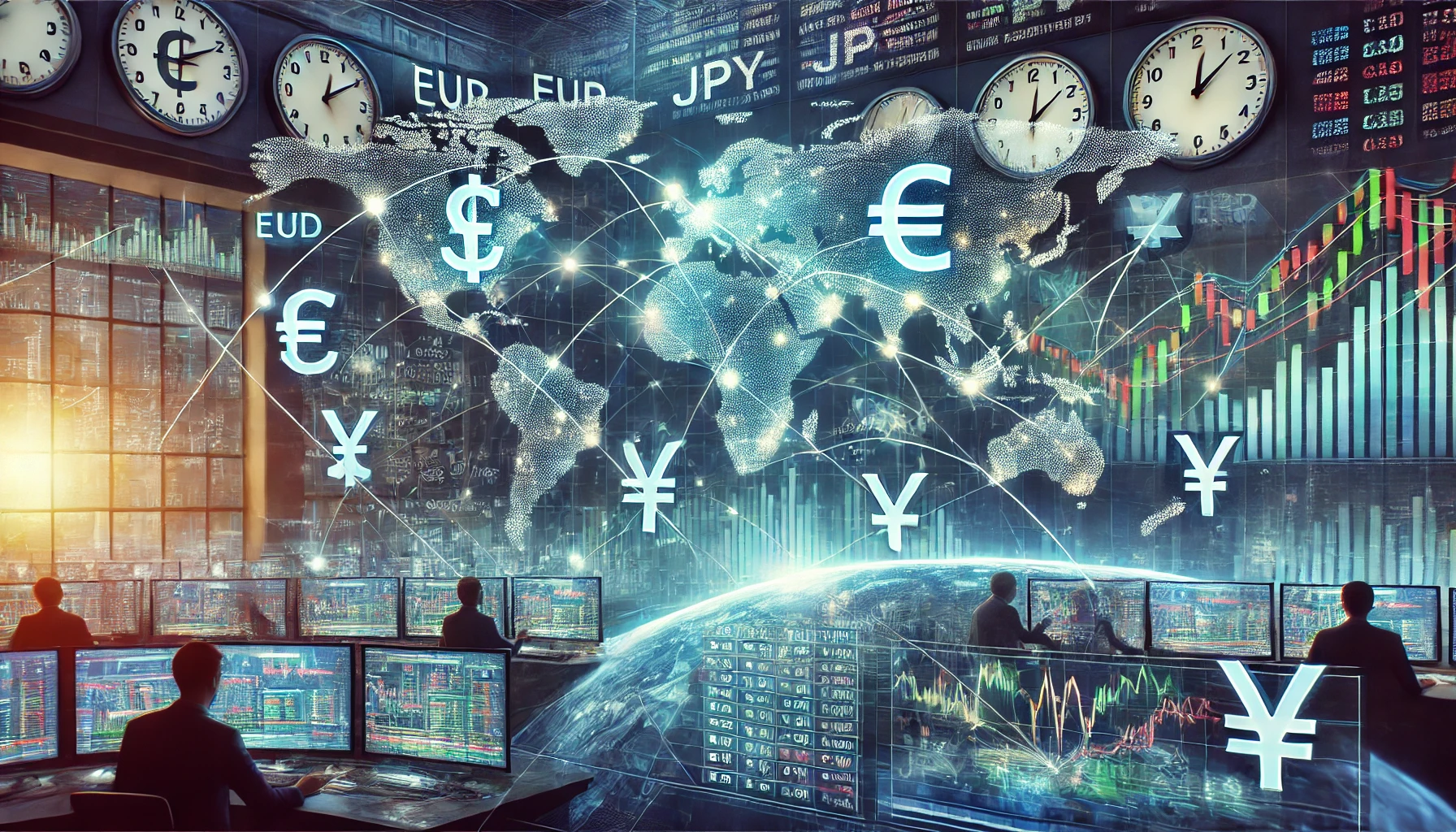An Introduction to Foreign Exchange Markets
What is Foreign Exchange?
In every country, units of currency are used to represent the price of an item and this currency is issued by the country’s central bank. To judge the value of a currency, it must be compared to an external reference - this reference is called the “Exchange Rate”.
Typically, the references against a currency’s value is measured against other currencies.
The role of the foreign exchange markets is to determine the relative values of different currencies. They directly influence each country’s foreign-trade patterns, guide the flow of international investment and affect domestic interest and interest rates.
The foreign exchange market forms the largest financial market category in the world, where hundreds of thousands of foreign-exchange transactions occur everyday.
Traditionally, the value of a currency was pegged to the value of a resource such as gold or silver, or was based on fixed rates. However, in 1972 governments from the largest economies in the world decided to let market forces determine exchange rates. This new profound uncertainty about the level of exchange rates sparked the growth of currency trading.
How are Currencies Traded?
There are four main markets where currencies are traded. These markets function separately but are closely interlinked:
Spot Market - these are where currencies are traded for immediate delivery. Small spot transactions often occur face to face when a moneychanger converts local currency into another currency.
For large transactions, they often occur electronically. The actual exchange of two currencies is handled through the banking system and the time of settlement for the trade can differ based on the traded currency’s popularity. For example, trades for US Dollars and Euros typically happen straight away, but for less popular currencies it can take up to two days.
Futures Market - allows participants to secure an exchange rate at certain future dates, through purchasing or selling something called a “futures contract”.
Options Market - a currency option gives the holder the right, but not the obligation, to buy or sell a foreign currency or foreign currency futures contract at a specified price during an agreed-upon period of time.
Derivatives Market - where most foreign-exchange trading occurs, the term derivatives encompasses a large number of financial instruments including options and futures, but they also include:
Forward Contracts - very similar to futures contract, in which they are agreements for a sale of an agreed amount of currency at a specified date. The key difference between forwards and futures is that currency forwards are arranged directly between a dealer and its customer, as opposed to an intermediary like an exchange. They are also more flexible, in that the customer can ask for a price amount and length of time that they desire.
Swaps - involves the sale or purchase of a currency on one date and the offsetting purchase or sale of the same amount on a future date, with both dates agreed upon on the initiation of the swap.
Who are the main players in the foreign-exchange markets?
There are four main participants in foreign-exchange markets:
Exporters and Importers - firms that operate on international land must pay their workers in the local currency, and they can also receive payments from that foreign land. They use the foreign-exchange markets to be able to change from their local currency into the foreign currency, and vice versa.
Investors - firms can own facilities, hold property or buy companies in other countries. These activities are called “Foreign direct investment” and require the investor to change their local currency into the foreign currency to facilitate these transactions.
These activities also involve investing into foreign-markets such as stock markets, where investors have to first obtain foreign currency to buy the asset, and when they sell the asset they must convert that foreign currency into their local one.
Speculators - these are typically banks, investment banks, hedge funds and high-frequency traders that buy and sell currencies solely to profit from anticipated changes in exchange rates.
Governments - national treasuries or central banks may trade currencies to purposefully affect exchange rates. This process is called ‘intervention’, where a government is making a deliberate attempt to alter the exchange rate between two different currencies by buying or selling.
Why do Exchange Rates Change?
In the short run, exchange rates are volatile can change for examples such as changed legislation, the election of a particular politician, or the publishing of unexpected economic news.
In the long run however, the expectation of real interest rates are one of the main influential factors in the fluctuation of exchange rates. A country’s real interest rate is the rate of interest an investor expects after subtracting the inflation rate.
How are Exchange Rates Managed?
In today’s day, the world’s currencies float freely against one another, where their values are determined mostly by market forces. This way of managing interest rates is called the “floating rate” system and differs from past systems such as fixed systems and semi-fixed systems - where for example, the value of the US dollar was pegged to the amount of gold reserves the central bank had at that point in time.
Whilst analysing if a currency is undervalued or overvalued is hard, governments may endeavour to move the market if they believe this is the case - a process called intervention. This involves the use of a country’s foreign-currency reserves to buy domestic currency in some banks.
Intervention, which is usually done in secret, can inflict heavy losses on investors who where betting against the currency going up or it going down.
This post is based on concepts from
Guide to Financial Markets: Why They Exist and How They Work by Marc Levinson, 7th Edition.
